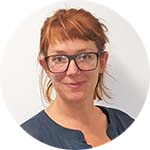Working with sacred texts in the Primary classroom can open up vistas of understanding for pupils. Teaching with sacred texts can support a multidisciplinary approach as we develop towards a religion and worldviews paradigm. Some of the ideas are inspired by Jenifer Jenkins’s excellent writing and CPD on hermeneutics – for links to Jennifer’s work see below.
I presented this as part of Norfolk SACRE’s 2022 conference. You can access this presentation below.
Sacred texts are beneficial for teachers of RE because they are an approved part of a religion’s “substantive knowledge”. Using sacred texts also facilitates a multi-disciplinary pedagogy, or the “ways of knowing” as Ofsted terms it (Research Review 2021, see link below).
How do we use sacred texts in our lessons? How do we help children to read, understand and interpret these ancient words? As Primary teachers, approaching the reading and study of a sacred text can be daunting. However, what we are doing at its core is reading, and we all teach guided reading and English. Therefore, we can transfer those skills.
Following the approach presented here involves reading the text three times, with a different viewpoint each time: the viewpoint of the writer, of the reader and then the believer.
Reading as the writer
Approaching the text from the perspective of the writer involves an exploration of when and where the text was written, who the intended audience is and what is the purpose of the writing?
Reading as a writer is quintessential guided reading. We think about the ideas that author is trying to communicate, what features have been used and how the writer draws the reader in. We might also consider the tone or emotion of the text. The aim is to make sense of what the writer is trying to communicate.
Reading as a Reader
Reading as a Reader is to become aware of pupils’ (and teachers’) own reactions to the text, or what Ofsted terms the development of ‘personal knowledge’ (Ofsted Research Review 2021).
You will recognise this approach from guided reading and there are further questions we can explore when Reading as a Reader. You might identify the genre, purpose or emotional tone of the sacred text, but as a way of more deliberately exploring readers’ own responses. For example, identifying the heroine and major plot points can pave the way for conversation about how readers interpret these structures. Does the pupil’s view of the situation colour their judgment; do they have further puzzling questions; do they feel for the heroine, and so on?
Reading as a reader is to make explicit both how our own perspective influences our interpretation, but also how we can be changed when plunged into another world through reading.
Reading as a Believer
In this last stage of reading, we step out of the text to consider it from the perspective of another reader: the believer.
This is the transition from looking through a theological lens to a social sciences lens. You might repeat questions already considered but with a change of focus. These are questions that ask us to postulate and empathise. You might talk about what a believer would take from this story, what we can say about believers at the time the story was written or how might this story inform a believer today.
Conclusion
Theology might be the lens through which we are used to viewing sacred texts, as we uncover a tradition’s beliefs, principles and values. As I have shown there are other lenses through which to view sacred texts, which add a richness and complexity to learning. These can be accessed by deliberately shifting the focus and purpose of reading.
Read more about ‘Theologies of Reading’ and hermeneutics in the Primary classroom with the support of Jennifer Jenkins: https://www.reonline.org.uk/teaching-resources/theologies-of-reading/
Presentation created to share this idea with colleagues
Check out Matt’s other writing and ideas on his website: www.theteachinglane.co.uk
OFSTED research review: https://www.gov.uk/government/publications/research-review-series-religious-education/research-review-series-religious-education

